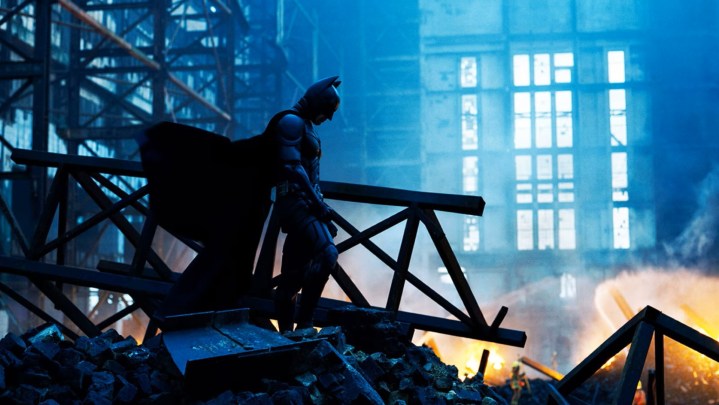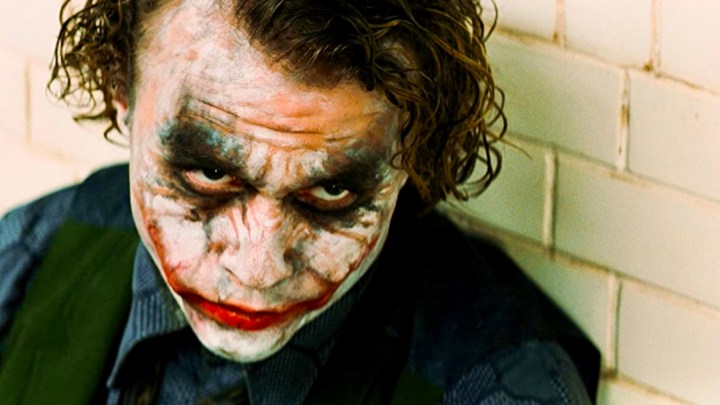
Let’s travel back to 2008 and revisit pop culture, shall we? The most popular TV show in the country was American Idol. Studio comedies like Forgetting Sarah Marshall could still gross over $100 million at the box office. Plus, superhero fatigue did not exist, which is the perfect segue into our conversation about the best comic book movie of all time, The Dark Knight.
Fifteen years ago today, The Dark Knight, Christopher Nolan’s highly-anticipated sequel to Batman Begins, hit theaters in the U.S. For a film billed as the event of the summer, The Dark Knight managed to exceed expectations and change the entire industry. A comic book movie centered around a caped crusader and a villain wearing clown makeup forced the Academy to nominate more films for Best Picture. This is the same Academy that somehow awarded Crash Best Picture. Yet, it bent the knee to a Batman movie.
The setup for The Dark Knight is relatively straightforward for a Christopher Nolan movie. After the events of Batman Begins, Batman (Christian Bale) is now the notorious crime-fighting vigilante of Gotham City. With the help of police lieutenant James Gordon (Gary Oldman) and district attorney Harvey Dent (Aaron Eckhart), Batman sets out to eliminate organized crime. Standing in his way is the Joker (Heath Ledger), the sadistic criminal mastermind and agent of chaos who wants to witness Gotham burn. The Joker pushes Batman to his limits, forcing Bruce to face several morally complex issues as he learns the true meaning of sacrifice.
A neo-noir disguised as a comic book movie
Thanks to his commitment to originality and prowess in practical effects, Nolan is one of the few filmmakers who can sell a movie on his name alone. No filmmaker better understands spectacle and the process of “eventizing” a film than Nolan. When adapting the source material, Nolan viewed the comics as a guide, not a map. There are comic book principles he followed, such as Batman’s unwillingness to kill or use guns. However, Nolan used The Dark Knight as an excuse to make a crime drama. The Dark Knight is a neo-noir disguised as a comic book movie and that’s what makes it so good. It’s not interested in fan service; instead, it simply wants to weave an elaborate morality play with the main players being comic book characters.
It’s like Nolan said “What if I make a remade of Michael Mann’s Heat set in Gotham City?” as he envisioned his Batman sequel in the mid-2000s. Did Nolan actually say that? No, probably not, but the filmmaker has stated in numerous interviews that Heat inspired The Dark Knight. Nolan told GQ how Mann turned Los Angeles into an “epic playground” in Heat. Nolan did the same with Gotham, filmed in Chicago, for The Dark Knight. Nolan filmed The Dark Knight in a real city with real people and real effects. This is not a film that was shot on a soundstage. The semi-truck flip happened. These practical effects, along with the sweeping shots of the city, add to the authenticity and grittiness of Gotham.
Speaking of Heat, Nolan’s homages to Mann’s action thriller are littered throughout the film. The opening scene heist and the car chase from The Dark Knight were inspired by the armored truck heist and bank shootout in Heat. Nolan’s use of masks and trucks, along with his inclusion of loud gunfire and chaotic energy, can all be attributed to Mann’s Heat. The Joker walking down the street with a shotgun is a stand-in for Robert De Niro’s Neil McCauley during a shootout against the police. The interrogation scene between Batman and the Joker is Nolan’s diner scene between De Niro and Al Pacino. Yet, these homages do not feel like blatant rip-offs because of Nolan’s creative direction and captivating screenplay.
Heath Ledger’s iconic performance

It’s time to talk about Heath Ledger. Amazingly, it took me this long to mention the late actor’s name in The Dark Knight. Ledger’s Oscar-winning portrayal of the Joker is the undisputed king of comic book portrayals. It’s arguably the most iconic performance of the 21st century. Ledger was so brilliant that he outshone Christian Bale, a rarity for an actor regarded as one of the best of his generation.
From the moment he stepped on screen, The Dark Knight became Ledger’s movie. The sinister laugh. The smudged makeup. The red lipstick. The facial scars. The slick green hair. The constant licking of his lips. This attention to detail allowed Ledger to differentiate himself from previous Joker portrayals, most famously by Jack Nicholson and Cesar Romero. With so many debates in the industry about method acting, it’s refreshing to read such kind words about Ledger’s behavior on set from his colleagues and crew members despite remaining in character.
The Dark Knight’s lasting legacy

Ledger is only onscreen for 33 minutes, but his presence looms large over every scene. The Joker is a bad guy; I have no problem calling a psychopathic murderer out when I see one. Yet, the Joker forces the audience to see a different side of Batman, one where he’s not acting like a true hero. The Joker goads Batman into physically assaulting him during the interrogation scene. Batman fights crime without the support of the police (besides Gordon). He selfishly chooses to save Rachel (Maggie Gyllenhaal) over Harvey. These aren’t exactly heroic qualities. It’s not black-and-white or good guy vs. bad guy in The Dark Knight. There’s a lot of gray, and this ambiguity strengthens the battle between Batman and the Joker.
The Dark Knight became the superhero industry’s first billion-dollar movie. It created a blueprint for auteurs to follow when crafting a comic book adaptation. Nolan recently told HugoDécrypte that he will never make another superhero movie. I agree with Nolan; he should never make another superhero movie. If the greatest comic book movie of all time is on your resume, your job in this genre is complete.
The Dark Knight is streaming on Max.



